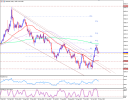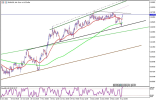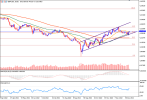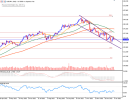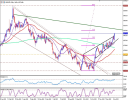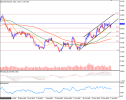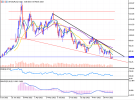The age of yellow metal in history
More than 5000 years have passed since the discovery of yellow metal. Its use as money began in ancient Egypt around 3200 BC. Thus, it played a role in the Gold Age trade, with bullion drawn to equal lengths at the mints. Today, gold still retains its commercial value and is the first choice of people who want to protect their savings.
Gold has been used as a medium of exchange for centuries. When we reach the 20th century, the direct use of gold as money has stopped, and today gold, which is an investment tool, is bought and sold with money.
Gold has been, is, and will be the greatest investment of all time due to its value retention, thousands of years of history, rarity, and other reasons. Gold is often seen as a safe haven investment and store of value.
Factors that affect the price of gold?
The most important factors that affect the price of yellow metal are the production factors. When gold miners produce more gold than the demand, the price will experience downward pressure due to the laws of the economy. Also, with the decrease in demand for gold production, the price of the yellow metal will rise. On the other hand, speculators, by interfering in the market, gold can create temporary imbalances that lead to rapid price changes.
Most of the time, buying gold is a defensive measure against inflation rate, currency depreciation, etc. Unlike many other goods, they are not consumed in most cases. Less than 10 percent of the gold is used for industrial purposes, and the rest is stored and sold later, either as bullion, coins, or jewelry.
Yellow metal rate changes
The most significant decline in gold prices in the past decade occurred between October 2012 and July 2013, nine months during which the metal lost more than a quarter of its value. The price continued in December 2015 before returning to a low of $1,054 per ounce. By October 2022, the price per ounce is $1,670.
Given that the total supply of gold is more or less constant. Basically, the classical theory that increasing and decreasing the supply of gold can affect the price is rejected. Therefore, speculators can make the most important impact. Investors estimate what governments and central banks are going to do and buy and sell it.
When the Federal Reserve announced in 2014 that it was ending its controversial stimulus program after the 2008 financial crisis, gold reached 1,053 by December 2015. While the second wave of concerns about the epidemic of the new type of corona virus (Covid-19) and the tension between the United States and China reached the highest rate of 2064 in August 2020. After that, it reached 2050 in March 2022 and experienced above 2000 dollars again. But with the start of the contractionary policies of most of the world's central banks to maintain the value of the currency, it has temporarily lost its attractiveness and has reached the rate of 1616.
It is impossible to reduce the value of gold forever.
Gold has fallen by more than 20% in the last few months. The strengthening of the US dollar has contributed to the downward movement of this commodity. The main reason for most analysts is the lack of a long-term upward outlook for gold and the increase in bond yields and the US dollar. In August 2022, the dollar index reached the highest level of 114.047 in 20 years and bond yields are increasing.
As the International Monetary Fund has predicted inflation in the United States to be 5.4% this year, 2% in 2023, 1.8% in 2024, 1.8% in 2025, and 1.9% in 2026, there is a possibility of curbing inflation and it is possible in the year In 2023, with the curbing of inflation and the reduction of bold American policies, the rate of the yellow metal will find an inverse state and will probably increase.
More than 5000 years have passed since the discovery of yellow metal. Its use as money began in ancient Egypt around 3200 BC. Thus, it played a role in the Gold Age trade, with bullion drawn to equal lengths at the mints. Today, gold still retains its commercial value and is the first choice of people who want to protect their savings.
Gold has been used as a medium of exchange for centuries. When we reach the 20th century, the direct use of gold as money has stopped, and today gold, which is an investment tool, is bought and sold with money.
Gold has been, is, and will be the greatest investment of all time due to its value retention, thousands of years of history, rarity, and other reasons. Gold is often seen as a safe haven investment and store of value.
Factors that affect the price of gold?
The most important factors that affect the price of yellow metal are the production factors. When gold miners produce more gold than the demand, the price will experience downward pressure due to the laws of the economy. Also, with the decrease in demand for gold production, the price of the yellow metal will rise. On the other hand, speculators, by interfering in the market, gold can create temporary imbalances that lead to rapid price changes.
Most of the time, buying gold is a defensive measure against inflation rate, currency depreciation, etc. Unlike many other goods, they are not consumed in most cases. Less than 10 percent of the gold is used for industrial purposes, and the rest is stored and sold later, either as bullion, coins, or jewelry.
Yellow metal rate changes
The most significant decline in gold prices in the past decade occurred between October 2012 and July 2013, nine months during which the metal lost more than a quarter of its value. The price continued in December 2015 before returning to a low of $1,054 per ounce. By October 2022, the price per ounce is $1,670.
Given that the total supply of gold is more or less constant. Basically, the classical theory that increasing and decreasing the supply of gold can affect the price is rejected. Therefore, speculators can make the most important impact. Investors estimate what governments and central banks are going to do and buy and sell it.
When the Federal Reserve announced in 2014 that it was ending its controversial stimulus program after the 2008 financial crisis, gold reached 1,053 by December 2015. While the second wave of concerns about the epidemic of the new type of corona virus (Covid-19) and the tension between the United States and China reached the highest rate of 2064 in August 2020. After that, it reached 2050 in March 2022 and experienced above 2000 dollars again. But with the start of the contractionary policies of most of the world's central banks to maintain the value of the currency, it has temporarily lost its attractiveness and has reached the rate of 1616.
It is impossible to reduce the value of gold forever.
Gold has fallen by more than 20% in the last few months. The strengthening of the US dollar has contributed to the downward movement of this commodity. The main reason for most analysts is the lack of a long-term upward outlook for gold and the increase in bond yields and the US dollar. In August 2022, the dollar index reached the highest level of 114.047 in 20 years and bond yields are increasing.
As the International Monetary Fund has predicted inflation in the United States to be 5.4% this year, 2% in 2023, 1.8% in 2024, 1.8% in 2025, and 1.9% in 2026, there is a possibility of curbing inflation and it is possible in the year In 2023, with the curbing of inflation and the reduction of bold American policies, the rate of the yellow metal will find an inverse state and will probably increase.

